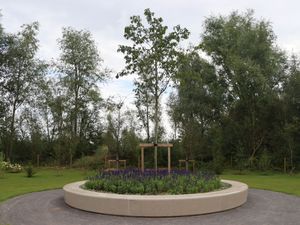Here's Cannock Chase as you've never seen it before
It's the Chase, but not as you know it. The latest photographs released from the Chase Through Time project show the historic practise trenches used to train soldiers for the First World War.

The trenches are still perfectly preserved beneath the surface.
The image above shows the shape of the land near to Brocton camp which was one of two major bases, along with Rugeley camp, built on Cannock Chase to boost the Allied war effort.
Today the overgrown plot provides a tranquil setting compared to the one in 1914 when thousands of troops would have been busy training for battle. Building work began within months of the outbreak of the war with Lord Lichfield granting permission for construction.

But before the huts could be built, the infrastructure including the water supply and roads had to be developed – the outlines of which still remain indented into the ground.
It is estimated around half a million soldiers were trained at the camps which were able to hold up to 40,000 people at one time.
As well as training bases they replicated small settlements complete with their own church, post office, bakery and a theatre. But they stood as eerie empty shells after the war finished until eventually Lord Lichfield sold them off.
The Chase Through Time project was launched by Staffordshire County Council and Heritage England last year. Researchers have fitted small aeroplanes with scanning equipment which analyses the shape of the land beneath the surface to tell the story of how it was used throughout the centuries.
Helen Winton from Historic England said: "The sheer scale of the First World War camps are particularly impressive."
Outlines of the huts and training trenches can be clearly made out at the sites which have since been covered over by trees, bracken, heather and bilberry. While the Chase's mining, ironworking and glass making past is also preserved beneath the surface. One of the scans of Beaudesert Old Park shows dozens of small digging shafts and coal pits.
Historic England has stated: "The First World War camps are only one part of the story of Cannock Chase. There is a long history of coal mining, ironworking and glass making and we are looking at the remains of these industries..
"We also expect the lidar and aerial photographs will help us find the remains of even older sites."
Heritage England is working with Staffordshire County Council to deliver the project which has benefitted from a £96k lottery grant.





